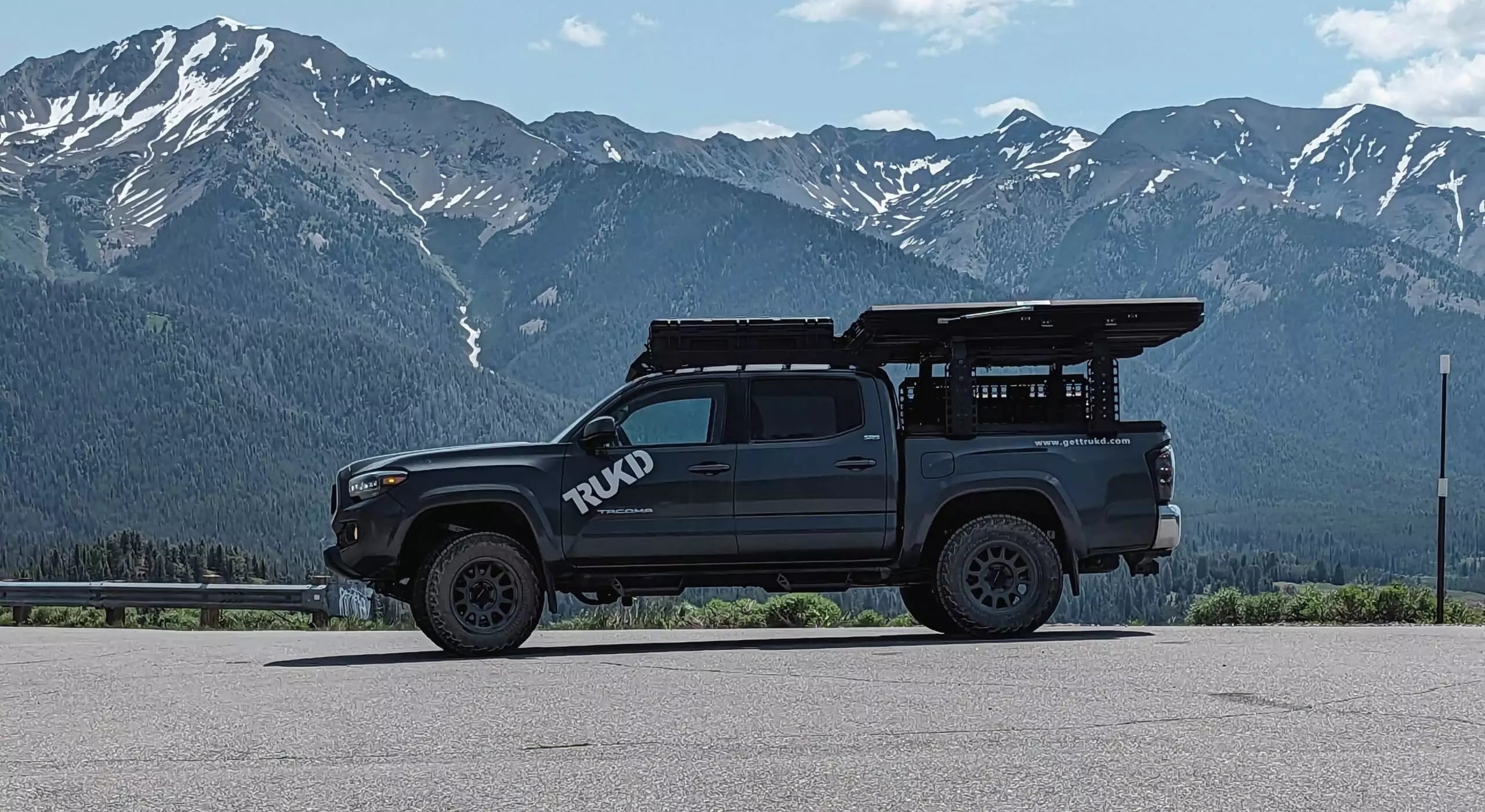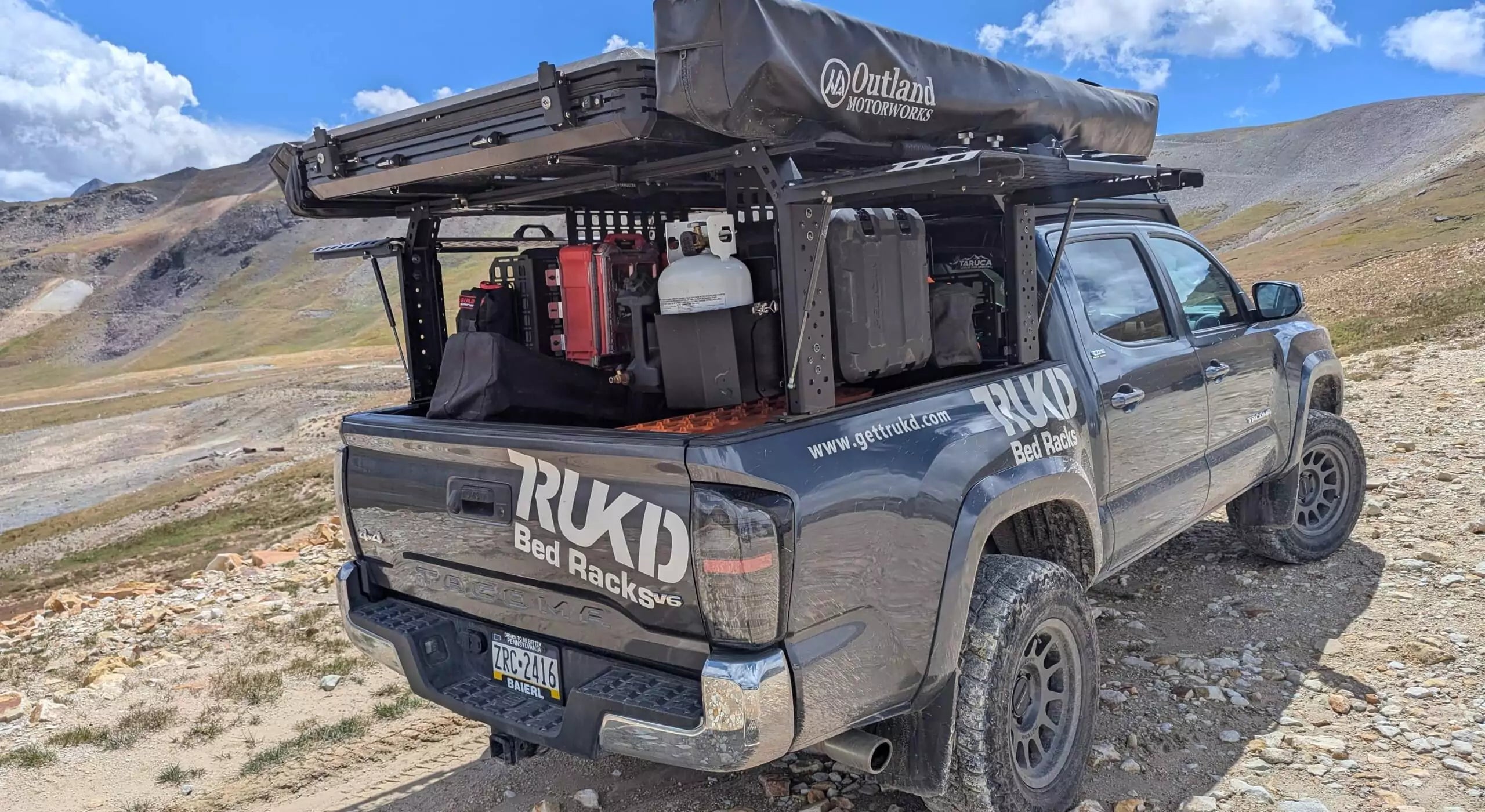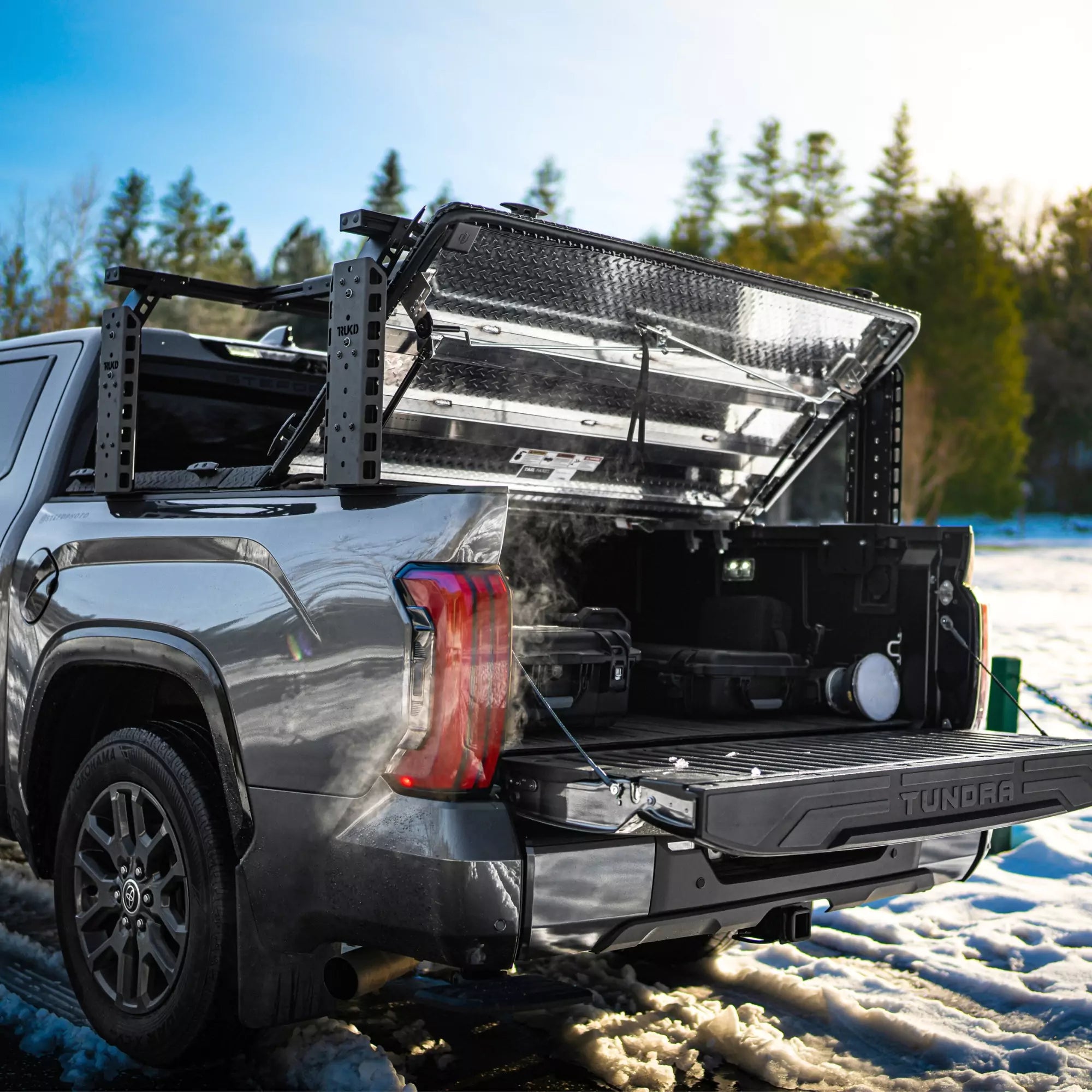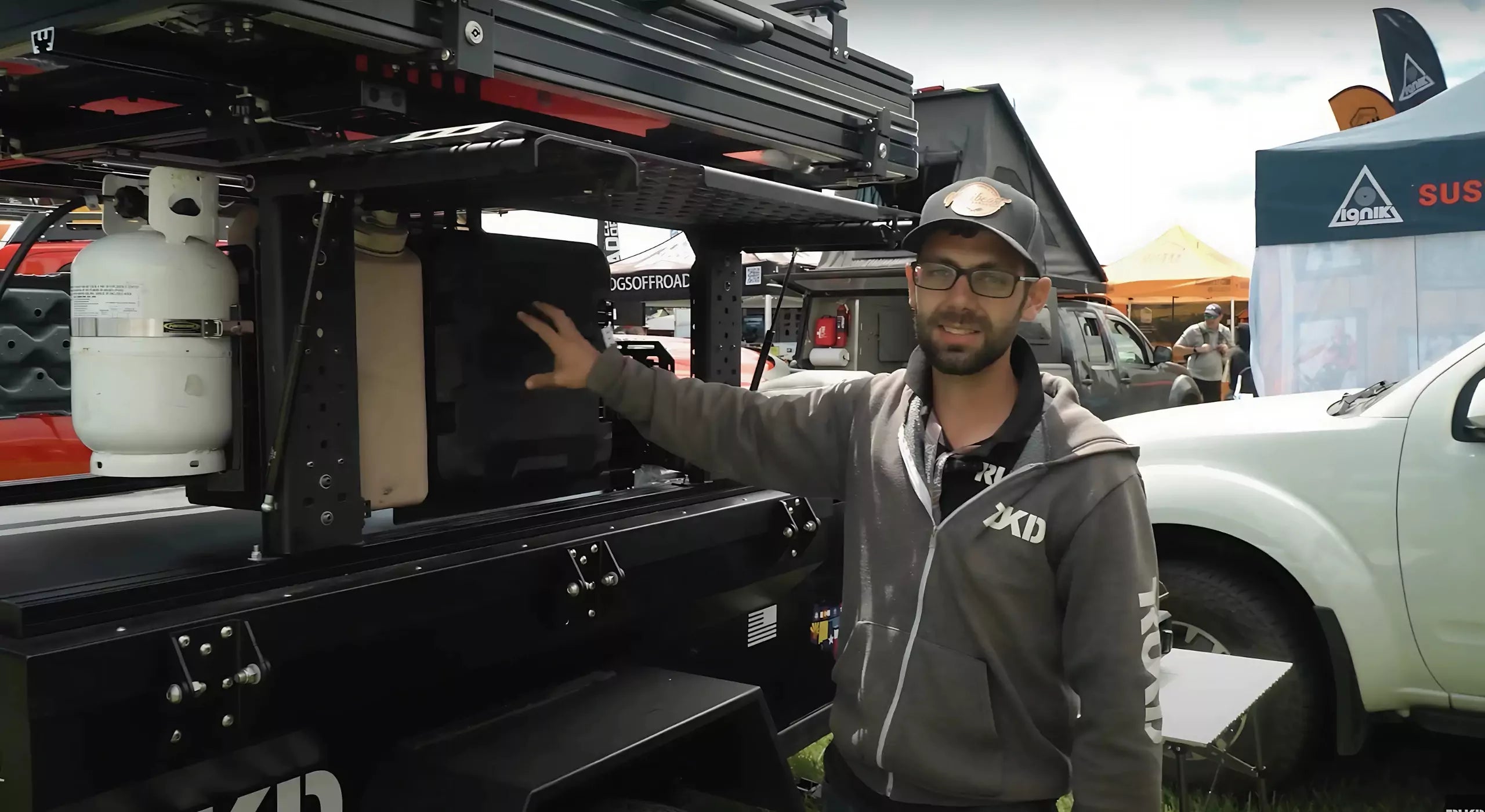
Built by Users. Explained by the Guy Who Designed It.
Join TRUKD founder and product lead Ben Azzam as he breaks down everything you need to know about choosing the right bed rack setup—from height selection to accessory compatibility.
This isn’t a marketing demo—it’s a deep dive from the guy who engineered the system and runs it on his own truck. Watch to get clear on what matters, what fits, and how to build a setup that’ll last a lifetime.
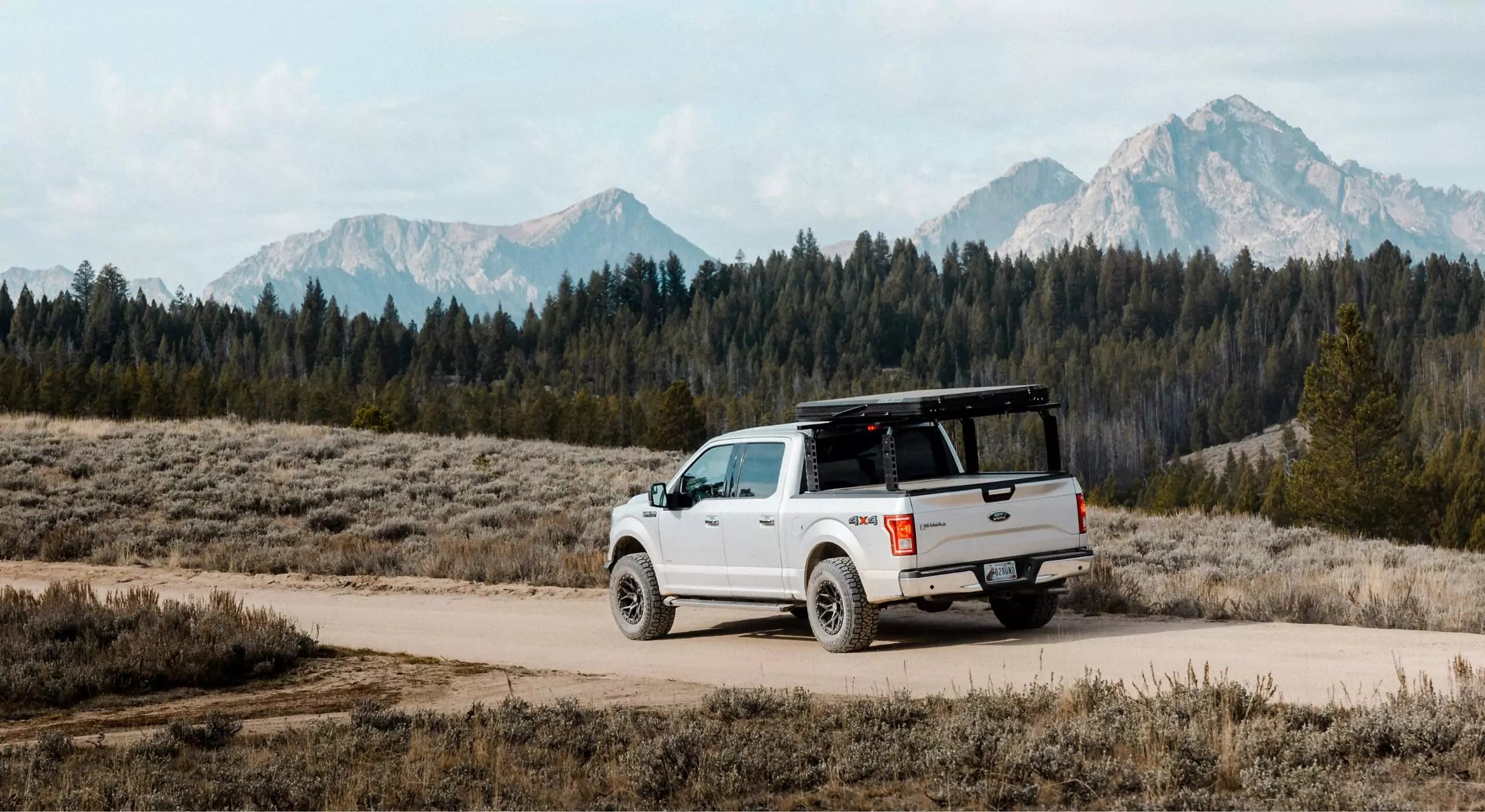
Introduction to Bed Racks
Choosing the right bed rack starts with knowing how you’ll use it. With so many options out there, it can feel overwhelming—but it doesn’t have to be.
TRUKD Bed Racks are engineered for strength, flexibility, and compatibility. To help you dial in the right setup, start by thinking through how your rack will work with your build and your lifestyle:
- Will you be mounting a rooftop tent? If so, what style or size?
- Need to haul ladders, kayaks, long gear, or construction materials above cab height?
- Already running a tonneau cover or topper—or planning to install one soon?
These questions shape everything from rack height to bracket type.
Still not sure what works best for your setup? No worries—this guide breaks it all down. And if you’d rather talk to a real human, just give us a call. We’ve helped thousands of truck owners build it right the first time.
MATERIALS MATTER
When it comes to bed racks, not all materials are created equal. The strength, durability, and long-term performance of your rack depend heavily on what it’s made from—and how it’s made.
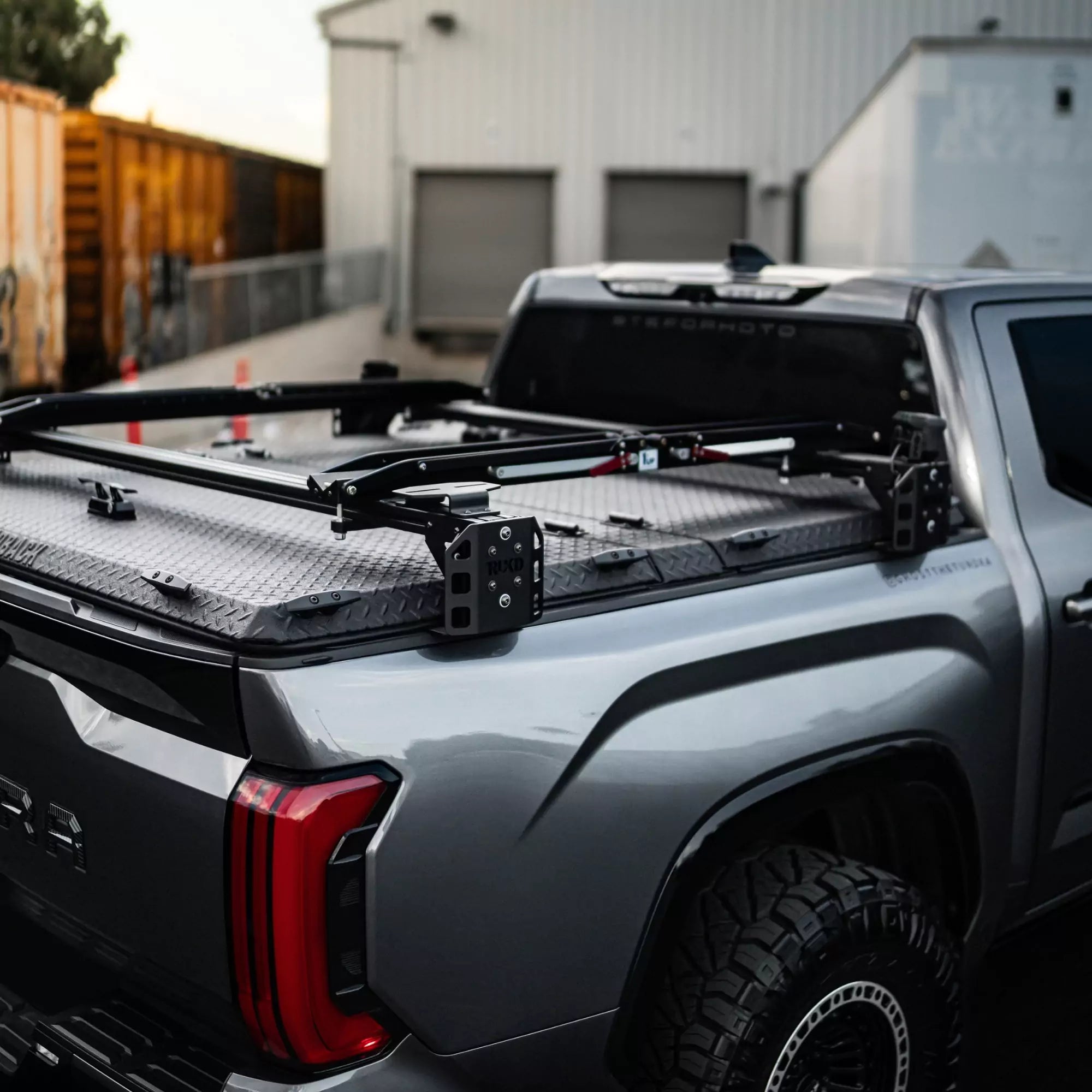
Key Materials Used in Bed Racks
Extruded Aluminum – Great for crossbars—if the walls are thick and the design is solid. Avoid extrusions that are too thin or full of holes; they flex, rattle, or fail under load.
Sheet Metal (Bent or Stamped) – Cheap, but risky. It’s prone to sagging and misalignment under pressure or off-road abuse.
Solid Extruded Bars – The gold standard. Strong, stiff, and ready for hard use. Look for thicker walls and fewer perforations.
Cast or Forged Aluminum – Very strong, but expensive and less adjustable. Cracking can happen under extreme strain if poorly designed.
Stainless Steel (304/316 Grade) – The most corrosion-resistant and structurally sound option, especially for brackets or hardware.
Powder-Coated Structural Steel – Great if it's at least 10-gauge and double-coated to fight rust. But even the best coatings won’t stop steel from rusting forever.

What to Watch Out For
Not all racks are built to last. Watch out for systems made from:
- Thin-gauge steel (12–16 gauge)
- Low-grade aluminum alloys like 3003
- 1/8" or thinner extrusions used in structural components
These materials may cut costs but won’t stand up to real-world use—especially under rooftop tents, long-span loads, or heavy off-road stress.
🛑 Bottom line: Always check what’s carrying your load—cheap materials don’t belong in critical components.
WHY TRUKD OUTPERFORMS
TRUKD racks are made with 5052 3/16" aluminum—the strongest formable sheet aluminum available—paired with 10-gauge 304 stainless steel for key structural components.
Powder-coated black for a clean, corrosion-resistant finish
15-series extruded aluminum crossbars for max stiffness
Heavy-profile uprights and end brackets to eliminate flex under load
This combo delivers unmatched strength, long-term durability, and peace of mind whether you’re hitting the trail or the jobsite.

Modularity That Moves
Most racks limit what you can mount. TRUKD doesn’t.
Many bed racks only work with specific tonneau covers or toppers—and most aren’t adjustable in height or length. That restricts how and where you can mount your gear. If you want full compatibility with covers, tents, and other accessories, your rack needs to flex with your build.
- Less than 25% of racks on the market offer length adjustability
- Even fewer allow for adjustable height to match cab height, tent clearance, or storage needs
- If you’re using a tonneau or topper, always double-check that it’ll work with the rack you’re considering
🔎 Fitment Tip: Look for systems that offer modular bracket options and adjustability—especially if your gear setup might evolve.
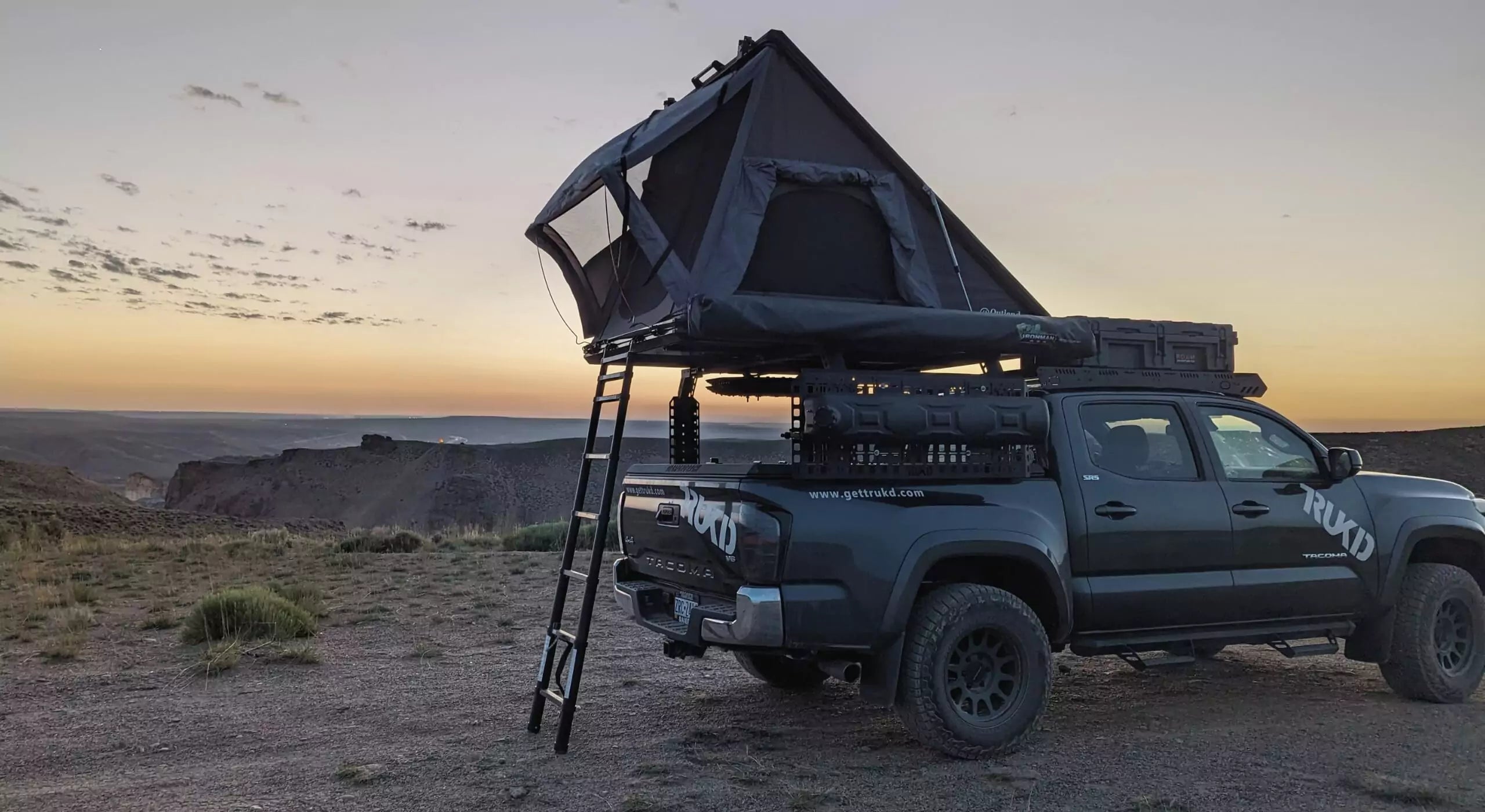
What to Watch Out For
Looks aren’t everything. Functional design matters more.
Some racks are designed to line up perfectly with roof racks—but that doesn’t always translate to real-world usability. These static setups often require extra accessories to function and may limit your ability to haul gear efficiently.
Avoid racks that:
- Only line up visually with a roof rack (but don’t adjust for load needs)
- Lack front-to-back structural support, especially above 12" height
- Don’t accommodate tonneau covers due to fixed-length connector bars
- Use cheap t-slots and fasteners (like t-nuts or compression nuts) not rated for real load-bearing use
⚠️ If your rack can’t flex with your build—or handle the weight—it’s just for show.
WHY TRUKD IS BETTER
Adjustability is built in—not an afterthought.
TRUKD Bed Racks feature both height and length adjustability, giving you more flexibility to dial in your perfect setup:
Up to 12” of length adjustment on 18" and 24.5" racks
Height adjusts every 2 inches
Accessory panel compatibility with 2.5” length adjustment increments
No matter your truck, gear, or cover, you can tune your TRUKD setup for a perfect fit—now and in the future.
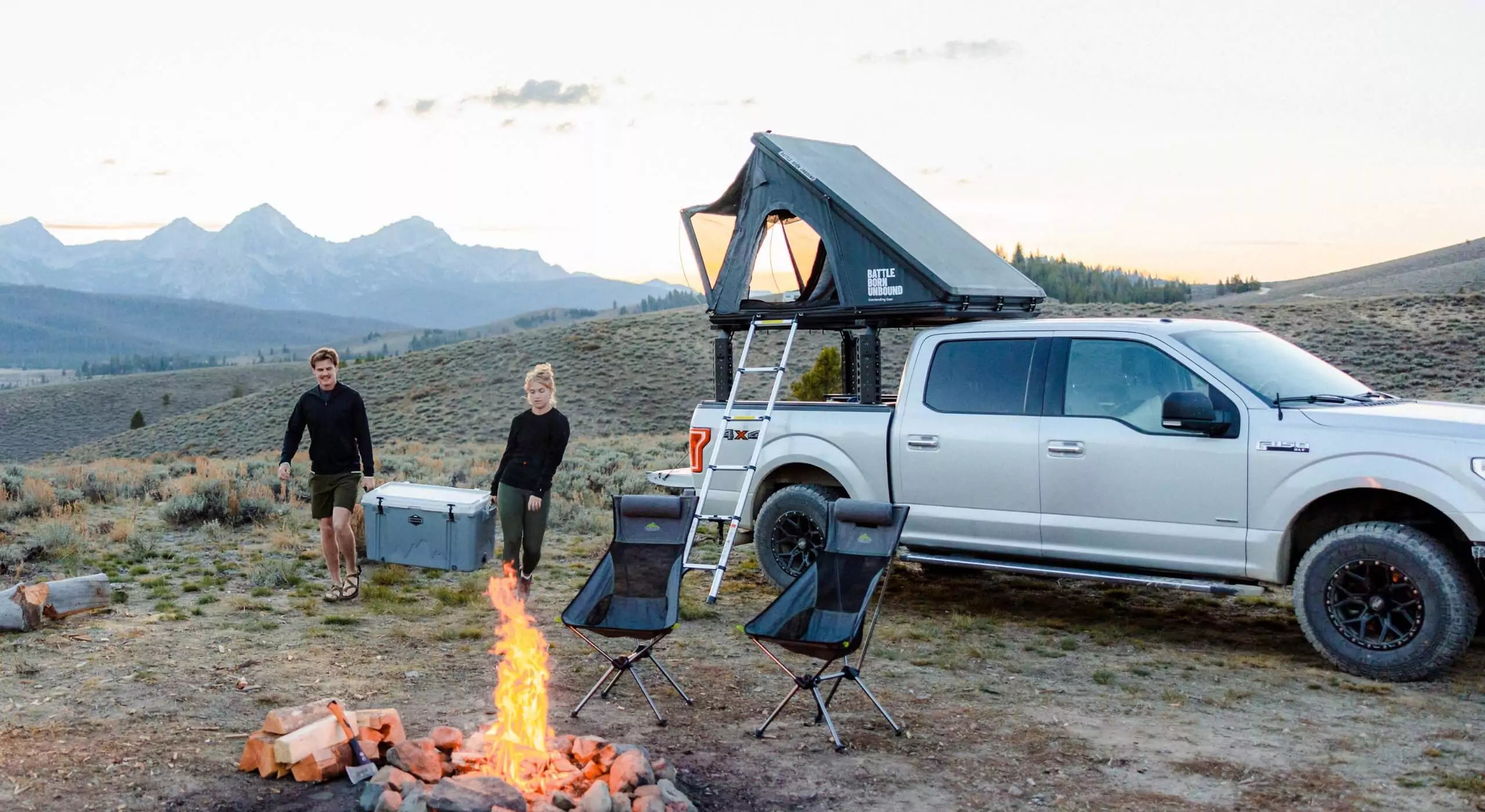
Understand Bed Rack Load Ratings
Load ratings can be confusing—and often misleading. The most trustworthy brands will always list both static and dynamic load ratings for their bed racks. But here’s the truth:
- Your truck bed is often the limiting factor—not the rack
- Ratings over 1,000 lbs static or 400 lbs dynamic are usually marketing fluff, unless the rack ties into the truck’s frame
Look for realistic, real-world-tested numbers. And always consider how your rack is mounted before trusting a big load claim.
Also, know the difference between on-road and off-road ratings:
- On-road dynamic ratings might look higher—but they don’t tell you how it performs on trail
- Off-road dynamic ratings matter most if you’re running trails with rooftop tents or gear up top
Pick up the phone, ask questions, and don’t settle for marketing spin.
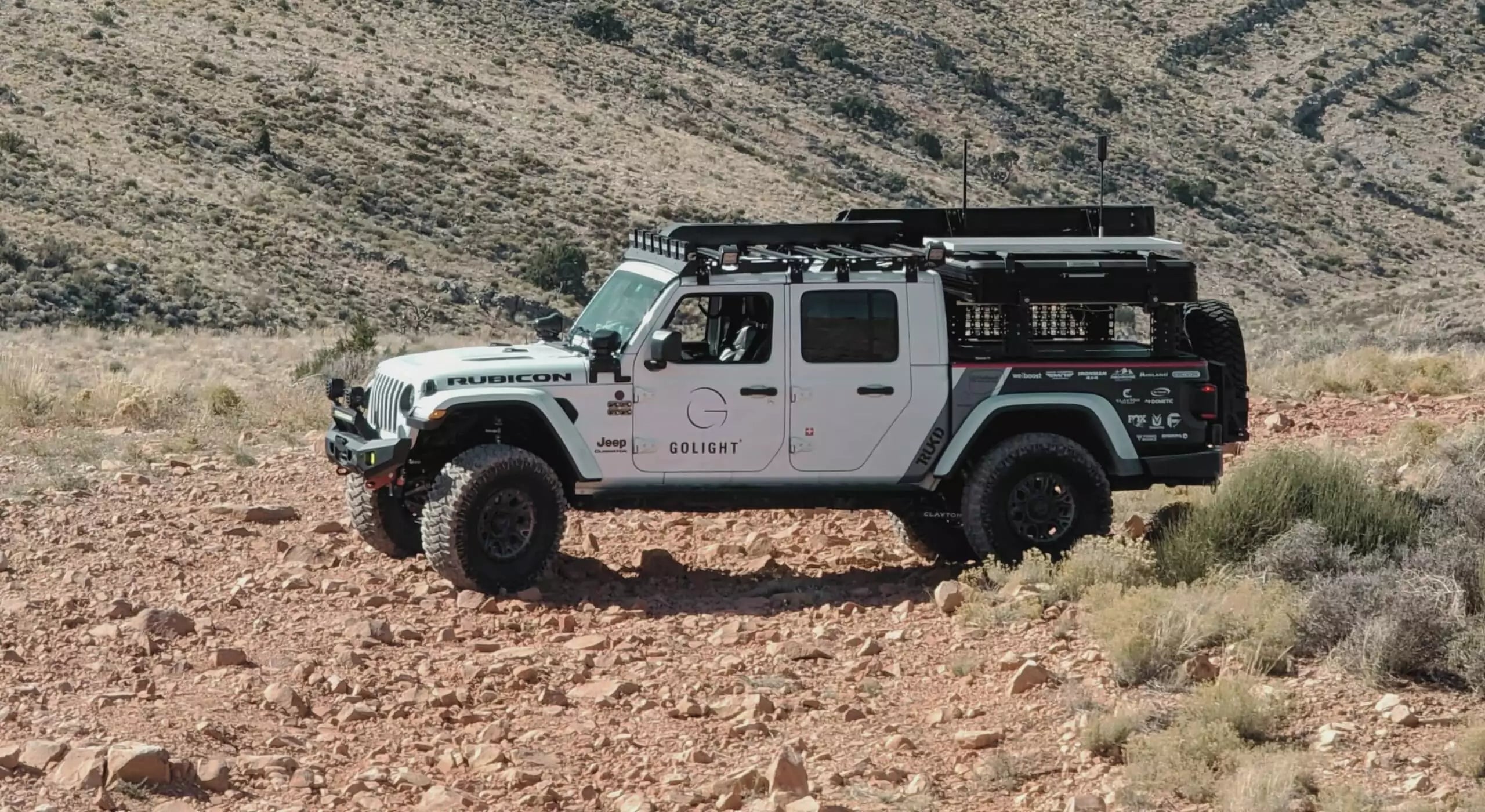
TRUKD Bed Rack Load Ratings
TRUKD racks are load-rated based on real testing and real-world application, not hypotheticals.
1,000 lb static load rating
250 lb off-road dynamic rating
That means you can run your rooftop tent or full gear setup with confidence—on the trail, off-road, or in any condition. And if you want to understand exactly how we came to those numbers, just call—we’ll walk you through it with zero B.S.
More Questions?
GIVE US A RING
Want to make sure your rack fits your build? We’ve installed more setups than we can count—and we’ll walk you through everything from mounting points to height clearances.
No call centers, just real support from people who live trucks and trails.
SEND AN EMAIL
Planning a full build or not sure which accessories you need? Our team geeks out over every detail—from bed channel compatibility to tie-down options.
Email us and get detailed, no-fluff guidance from experts who’ve been there.
DROP US A TEXT
On the go? Text us your questions about fitment, crossbar spacing, or which rack fits your gear-hauling needs.
We’ll fire back with real answers—fast and to the point.

